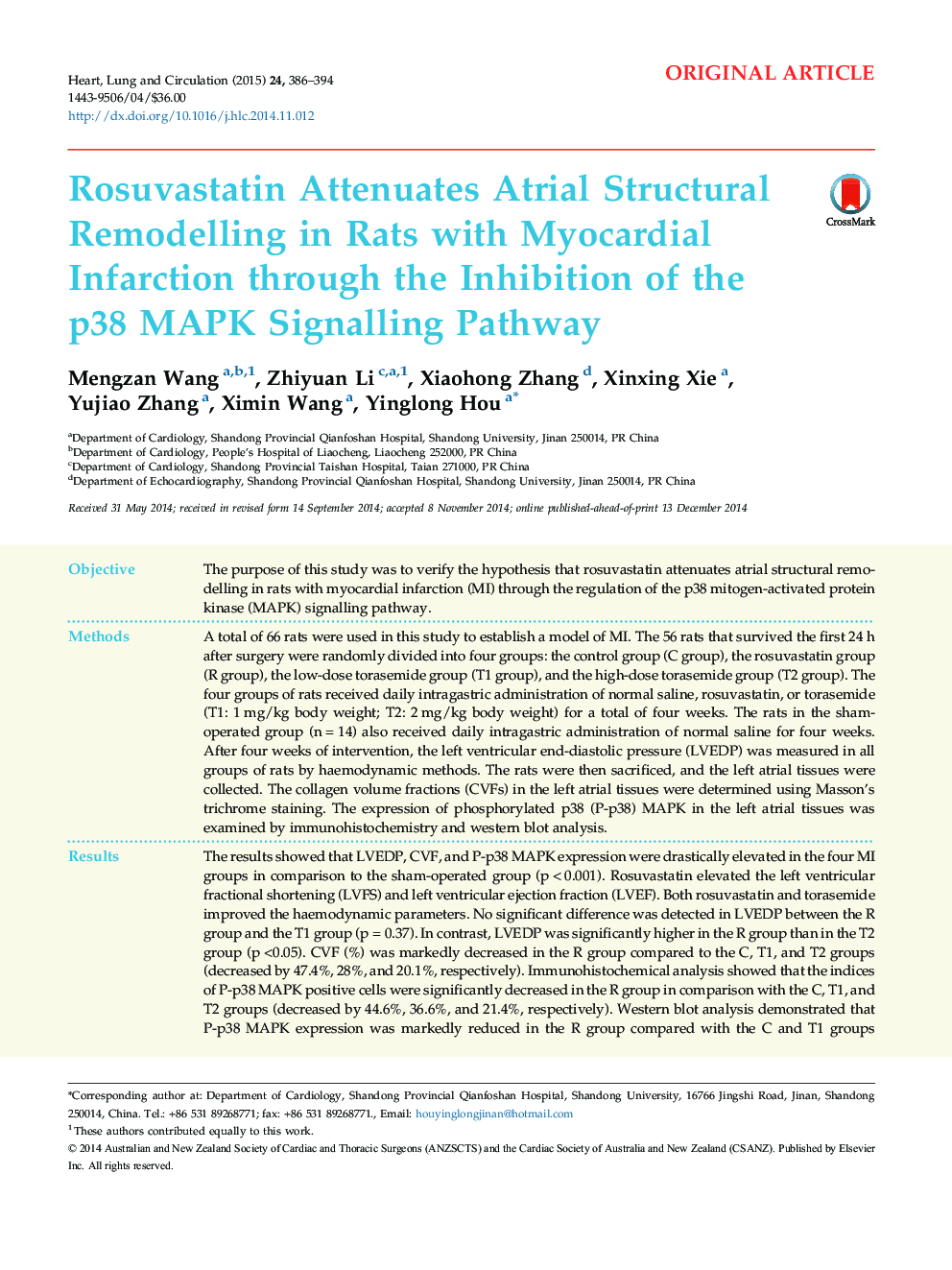| Article ID | Journal | Published Year | Pages | File Type |
|---|---|---|---|---|
| 2917592 | Heart, Lung and Circulation | 2015 | 9 Pages |
ObjectiveThe purpose of this study was to verify the hypothesis that rosuvastatin attenuates atrial structural remodelling in rats with myocardial infarction (MI) through the regulation of the p38 mitogen-activated protein kinase (MAPK) signalling pathway.MethodsA total of 66 rats were used in this study to establish a model of MI. The 56 rats that survived the first 24 h after surgery were randomly divided into four groups: the control group (C group), the rosuvastatin group (R group), the low-dose torasemide group (T1 group), and the high-dose torasemide group (T2 group). The four groups of rats received daily intragastric administration of normal saline, rosuvastatin, or torasemide (T1: 1 mg/kg body weight; T2: 2 mg/kg body weight) for a total of four weeks. The rats in the sham-operated group (n = 14) also received daily intragastric administration of normal saline for four weeks. After four weeks of intervention, the left ventricular end-diastolic pressure (LVEDP) was measured in all groups of rats by haemodynamic methods. The rats were then sacrificed, and the left atrial tissues were collected. The collagen volume fractions (CVFs) in the left atrial tissues were determined using Masson's trichrome staining. The expression of phosphorylated p38 (P-p38) MAPK in the left atrial tissues was examined by immunohistochemistry and western blot analysis.ResultsThe results showed that LVEDP, CVF, and P-p38 MAPK expression were drastically elevated in the four MI groups in comparison to the sham-operated group (p < 0.001). Rosuvastatin elevated the left ventricular fractional shortening (LVFS) and left ventricular ejection fraction (LVEF). Both rosuvastatin and torasemide improved the haemodynamic parameters. No significant difference was detected in LVEDP between the R group and the T1 group (p = 0.37). In contrast, LVEDP was significantly higher in the R group than in the T2 group (p <0.05). CVF (%) was markedly decreased in the R group compared to the C, T1, and T2 groups (decreased by 47.4%, 28%, and 20.1%, respectively). Immunohistochemical analysis showed that the indices of P-p38 MAPK positive cells were significantly decreased in the R group in comparison with the C, T1, and T2 groups (decreased by 44.6%, 36.6%, and 21.4%, respectively). Western blot analysis demonstrated that P-p38 MAPK expression was markedly reduced in the R group compared with the C and T1 groups (reduced by 67% and 40.5%, respectively). The level of P-p38 MAPK in the R group was slightly higher than in the T2 group. However, the difference was not statistically significant (p > 0.05).ConclusionRosuvastatin attenuates atrial structural remodelling in rats with MI. The mechanism underlying this phenomenon may be associated with the downregulation of P-p38 MAPK by rosuvastatin.
